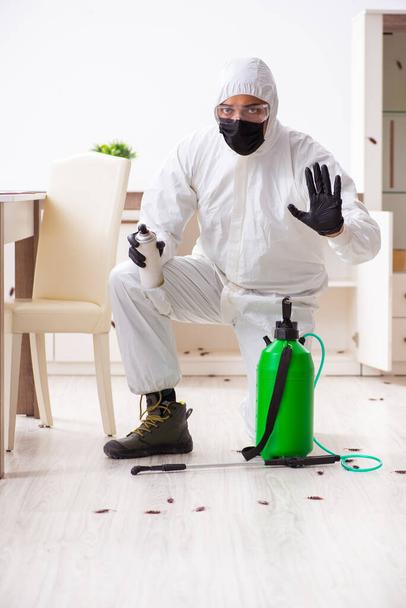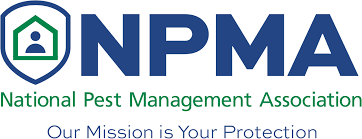Dealing with a bedbug infestation can be a distressing experience for homeowners. In an effort to combat these persistent pests, many turn to chemical treatments to eradicate them from their living spaces. While such chemicals are designed to eliminate bedbugs effectively, it is crucial to be aware of their potential negative effects. In this blog post, we will explore the downside of using chemicals to kill bedbugs in a home environment and shed light on safer alternatives.
Health Risks to Humans:
Many chemical pesticides used to kill bedbugs contain toxic ingredients that can pose health risks to humans, especially if not used correctly or in excessive amounts. Common side effects may include skin irritation, respiratory problems, allergic reactions, and even long-term health issues. Additionally, certain chemicals have been linked to more severe consequences, such as neurotoxicity and hormonal disruption. It is important to prioritize the safety of household members when considering chemical treatments.
References:
- Potter, M. F. (2011). The History of Bed Bug Management—With Lessons from the Past. American Entomologist, 57(1), 14-25.
- EPA. (2021). Bed Bugs: Get Them Out and Keep Them Out! United States Environmental Protection Agency.
Environmental Impact:
The use of chemical pesticides can have detrimental effects on the environment. When these chemicals are applied indoors, they may contaminate surfaces, air, and water sources. Some pesticides are persistent and can remain in the environment for extended periods, potentially harming non-target organisms and disrupting ecosystems. The accumulation of these chemicals in water bodies can also pose risks to aquatic life. It is crucial to consider the environmental impact before resorting to chemical treatments.
References:
- DeVries, Z. C., & Kells, S. A. (2017). When Bedbugs Bite: An Evidence-Based Analysis of the Efficacy of Topical Bedbug Insecticides. American Journal of Medicine, 130(6), 760-766.
- Wang, C., & Bennett, G. W. (2009). Comparative Survival of Cimex lectularius L. (Hemiptera: Cimicidae) and Nautilus spp. (Ephemeroptera: Heptageniidae) Exposed to Selected Insecticides. Journal of Economic Entomology, 102(2), 699-709.
Development of Resistance:
Bedbugs have shown remarkable adaptability and resistance to many chemical pesticides over time. The excessive and indiscriminate use of certain chemicals has accelerated the development of resistance in bedbug populations, making them even harder to eliminate. This can lead to prolonged infestations, increased treatment costs, and frustration for homeowners. Relying solely on chemical treatments may exacerbate the problem and make it more challenging to find effective solutions.
References:
- Romero, A., Potter, M. F., Potter, D. A., & Haynes, K. F. (2007). Insecticide Resistance in the Bed Bug: A Factor in the Pest’s Sudden Resurgence? Journal of Medical Entomology, 44(2), 175-178.
- Doggett, S. L., Dwyer, D. E., Penas, P. F., & Russell, R. C. (2012). Bed Bugs: Clinical Relevance and Control Options. Clinical Microbiology Reviews, 25(1), 164-192.
Safer Alternatives:
- Heat Treatment: Bedbugs are highly susceptible to heat. Professional heat treatments can effectively eradicate bedbugs without the need for chemicals, ensuring minimal health risks and environmental impact.
- Integrated Pest Management (IPM): IPM approaches focus on combining multiple control methods such as physical removal, mattress encasements, vacuuming, and monitoring devices to manage bedbug infestations. By employing a holistic strategy, chemical usage can be minimized or even eliminated.
- Natural and Non-Toxic Sprays: Some natural alternatives such as diatomaceous earth, essential oil-based sprays, or insecticidal soaps can be used as supplementary measures to control bedbugs. While they may require more persistence and thoroughness, these options pose fewer risks to human health and the environment.
Conclusion:
While the immediate elimination of bedbugs from our homes is a top priority, it is crucial to consider the potential negative effects of chemical treatments. By understanding the health risks, environmental impact, and the development of resistance, we can make informed decisions and explore safer alternatives such as heat treatment, integrated pest management, and natural remedies. Prioritizing the well-being of our homes and the planet ensures a more sustainable and effective approach to combatting bedbug infestations.
References:
- EPA. (2021). Integrated Pest Management for Bed Bugs. United States Environmental Protection Agency.
- Kilpinen, O., & Jensen, K.-M. V. (2020). Bed Bug Control: A Practical Guide for Pest Management Professionals. Insects, 11(11), 775.








